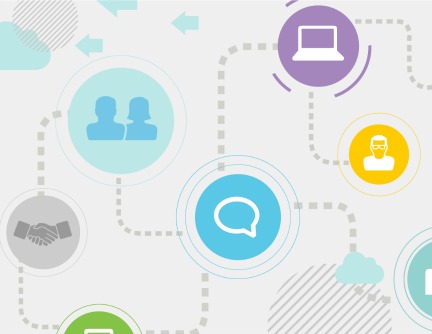What makes a good app? This is the question that application developers have been trying to answer for quite a few years now. The technical component of the process has been in a constant upgrade, which has actually led to a major breakthrough for the non-technical part, and it is all due to big data. The millions and millions of bytes of data that users produce on a daily basis can actually serve app developers to build far better apps. In this article, we are going to tell you how big data is laying the foundation for a revolution in the app world.
Making the Best Mobile App
The ideal mobile app must be attractive looking, fast, and easy to use, but most importantly, it must fulfill the user’s needs as best as possible. A comprehensive analysis of the user experience can, therefore, lead to better apps precisely because it will relay what the users want to accomplish when using an app.
Moreover, user experience is the primary source for identifying the best possible ideas for new apps. By understanding how the users interact with an app and their specific behavior while using it, developers can come up with solutions for improving the existing apps, as well as user-oriented ideas for brand new ones.
Big Data Fuels User Experience Analysis
As we have mentioned above, app development requires a comprehensive analysis of the user’s experience. Big data stokes the full array of the user’s behavior, which can convey a very detailed picture of the focus points in the user’s experience. Then, analyzing the collective behavior of the users will relay the complete range of wants and needs that users have in regards to that app.
Furthermore, this can assist the development of new apps as well. By analyzing the dig data behind the top apps that are similar to the one that is being created, developers can find ways to make the new one exactly what the user wants it to be.
For instance, to create a fitness app, developers could first analyze the top-ranking apps in this section, such as Fitstar Personal Trainer, Runkeeper, or Argus, and find out exactly what the users want their apps to do for them. Then, they can include all the key features like calorie counters and pedometers, as well as those innovative features that would make the new app stand out from the others.
Understanding and Using Big Data
Big data can provide such a detailed rendition of the user experience because it is simply larger than life. The quantity of data produced by users amounts has long exceeded petabyte-level and it has gotten to several zettabytes of raw information, and the numbers are growing fast. The amount of information stored worldwide is expected to reach yottabyte level in the following years.
In fact, it seems that the unstructured data produced only in the past few years has already surpassed the entire amount of data created before it. As such, crunching down this immense amount of numbers to relevant info can only be done through high-level analytics. But the effort is clearly worthwhile because it can produce valuable information for maximizing the potential of existing apps and developing innovative new ones.
Big Data and Mobile Apps – The Future of the Digital Word
The mobile app market is expected to exceed the $100 billion quota and reach up to $189 billion by 2020 because the vast majority of users have shifted almost entirely to smartphones and tablets. As such, creating better mobile apps is clearly the future of digital development.
Compared to computer apps, mobile apps are far more volatile. Since they are expected to be quite simple in display and features, it is absolutely crucial that users show great interest for those specific features. And the best way to procure this type of information is by analyzing big data, which will make this an equally profitable billion-dollar business.
As you can see, the future of the mobile app world is closely tied to that of big data. Analytics experts will find new strategies to interpret the gargantuan amounts of unsorted data to identify the key features for the apps of tomorrow, which will bring mobile apps closer and closer to user experience perfection.












![Top 5 ways chatbots transform the financial industry [Infographic]](https://crayondata.ai/wp-content/uploads/2017/04/artificial-intelligence-3-1.jpg)

![10 amazing facts about personalization and data [Infographic]](https://crayondata.ai/wp-content/uploads/2016/12/digitilization-representaion-1.jpg)


